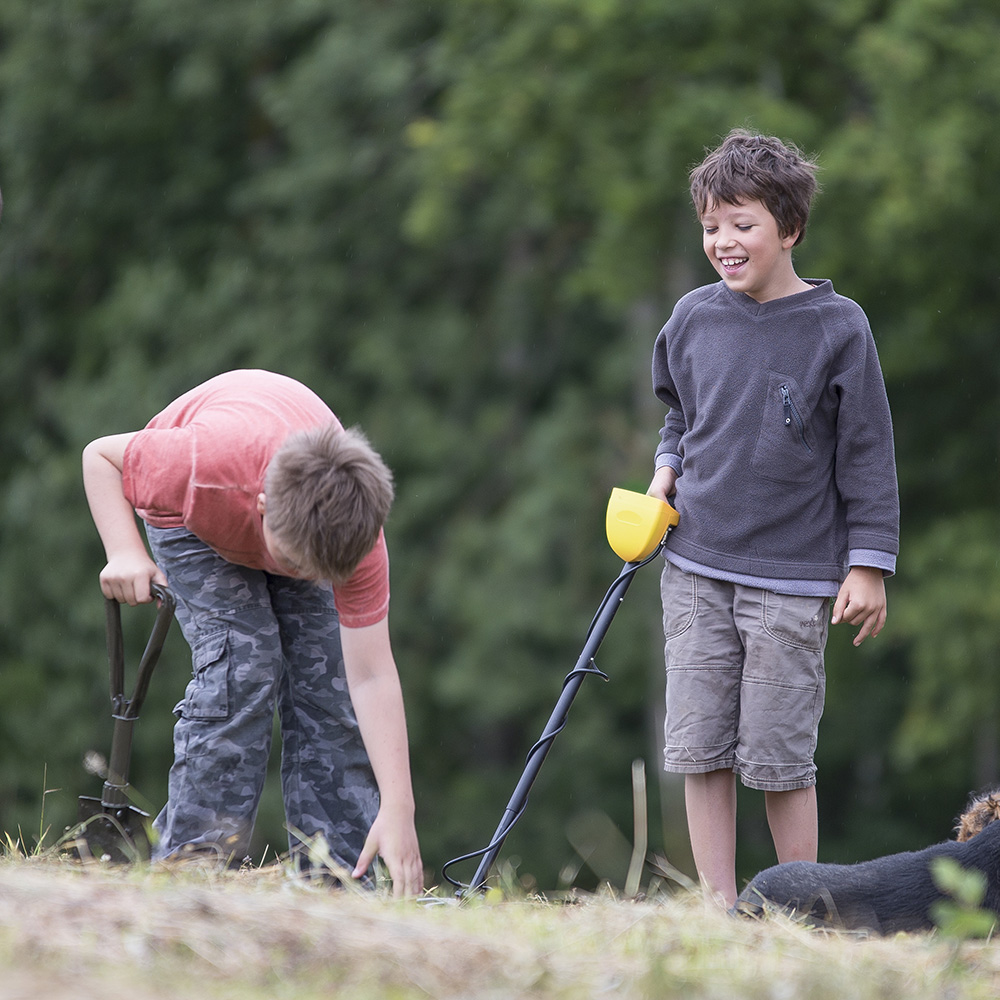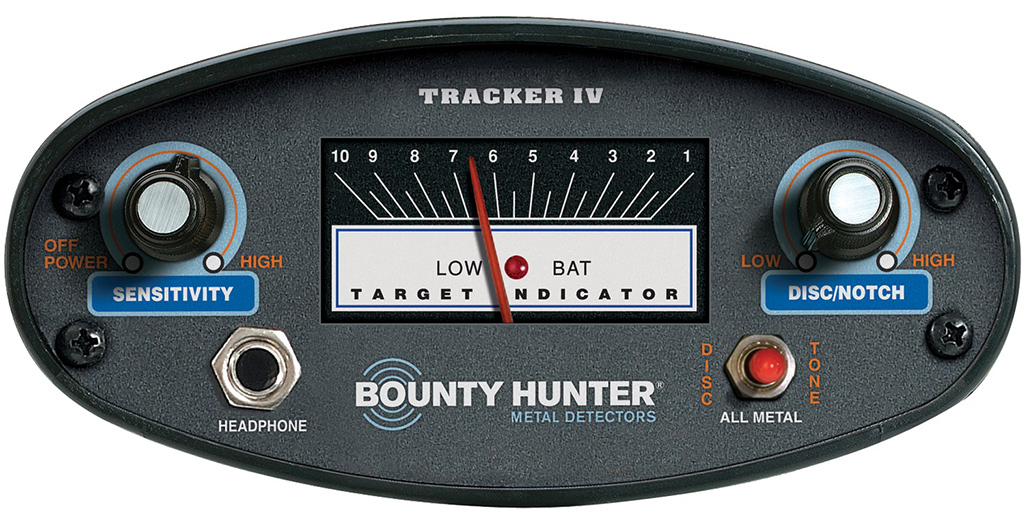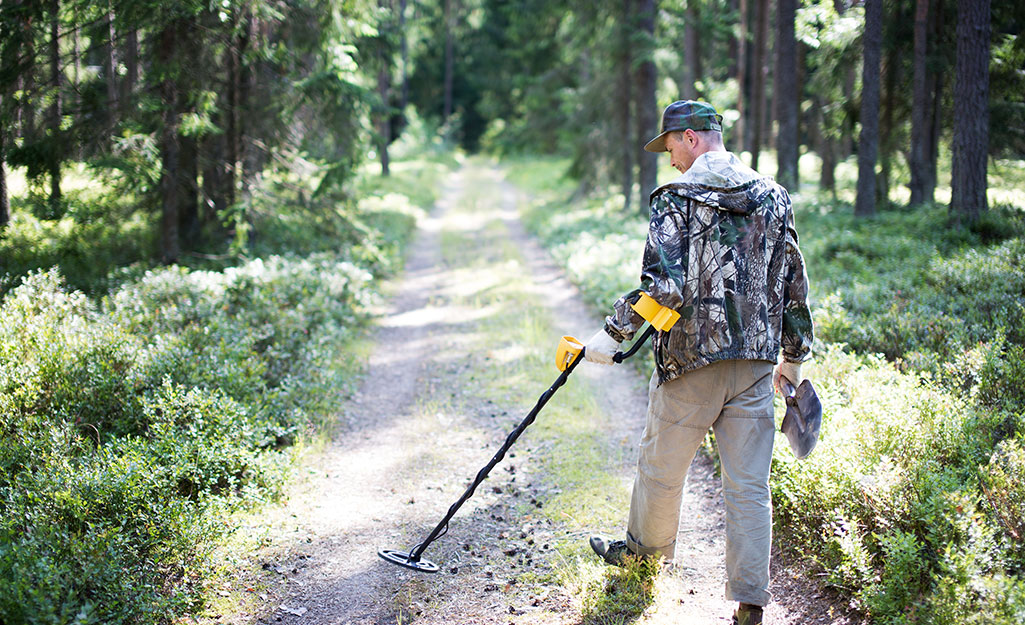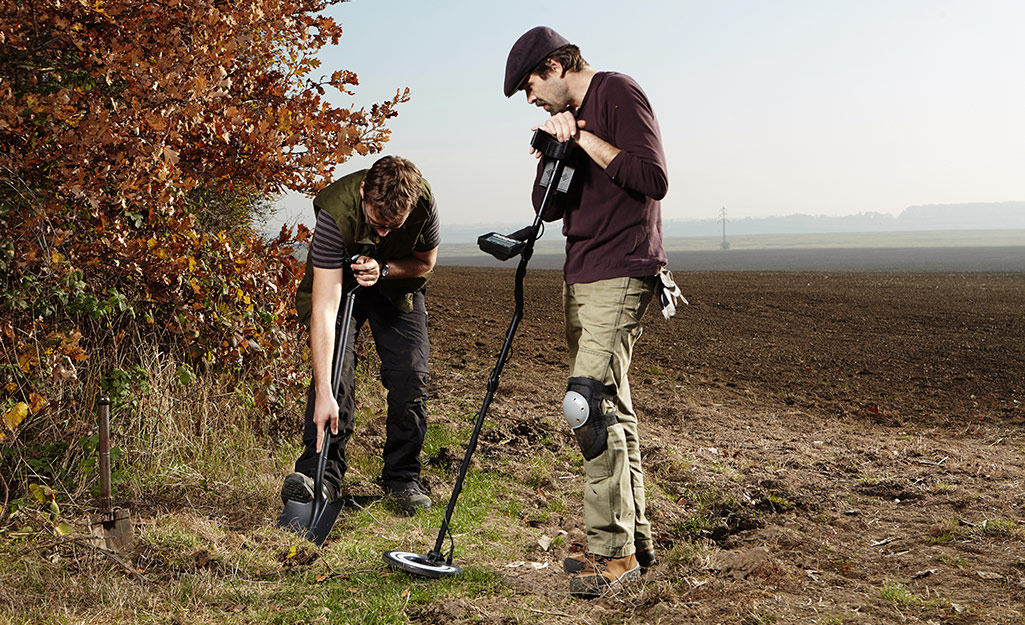How to Use a Metal Detector

Last updated September 7, 2023
Metal detecting is a great way to spend time outdoors and explore areas that you might not otherwise see – and maybe discover lost treasure along the way. Learning how to use a metal detector efficiently will help you enjoy your new hobby.
Whether the tool is used for fun or to find property markers, lost keys, machine parts and other lost items, this guide teaches you how to use a metal detector effectively and provides tips for metal detecting.
Difficulty:
Beginner
Duration:
Under 2 hours
Table of Contents
Know and Test Your Equipment
Know the Rules and Play Safe
Technique and Strategy
Know and Test Your Equipment

Familiarize yourself with the metal detector before heading out on your first hunting and finding mission. Read the instruction manual to understand the basic functions and detection modes for your specific model. Also, the best way to learn how to use a metal detector is to practice.
Test your metal detector with small items made from different types of metals such as coins of different denominations, a piece of aluminum foil or a nail. Adjust the detector settings, which can include sensitivity, discrimination and ground balance.
A trial run is a good way to familiarize oneself with the instrument’s tones and which test items will not be detected when adjustments are made. Knowing how to use a metal detector and its settings in a controlled environment reduces frustration in the field.
Key accessories for your metal detecting kit include a small shovel, garden trowel or digging tool and durable work gloves to protect hands while sifting dirt. An extra set of batteries is also good to have on hand.
Finally, wear comfortable headphones connected to the headphone jack on most models to help you hear subtle changes in the detector’s alert tones.
Know the Rules and Play Safe

You must learn how to use a metal detector responsibly before learning effective operation.
Stay away from government-owned property to avoid any problems. Wide-reaching restrictions from the Archaeological Resources Protection Act prohibit metal detecting on public lands to protect historical remains.
Normally, however, developed campgrounds, swimming beaches and other developed recreation sites are open to the hobby unless there are heritage resources present. If you have any doubt, ask a park ranger or other authority for guidance.
- In general, be aware of federal, state and local laws before searching. Some jurisdictions may permit surface detecting while others prohibit using metal detectors altogether.
- Do not trespass. Seek permission before entering private property.
- Take care to refill all holes and leave no damage.
- Remove and properly dispose of any trash found.
- Appreciate, respect and protect natural resources, wildlife and private property.
For your personal safety while metal detecting, common sense is the best tip to follow. Be aware of your surroundings. The metal detector is an investment itself and some people might assume that you have found valuable items.
Never wear headphones near traffic.
Technique and Strategy

- To use a metal detector, stand in a comfortable position and extend or retract the stem so that the coils hover just above the ground when you hold the unit.
- Walk slowly as you swipe the machine from side to side.
- Keep the search coils close and parallel to the ground; raising it during a sweep can produce false readings.
- When a target is identified by a beep, continue sweeping in narrower paths and then a circular motion to isolate the location.
The next step is to dig a proper plug that can be replaced with minimal damage to grass roots.
- Use your digging tool to make a U-shape about 3 inches deep at the target
- Flip the sod over, using the uncut portion as a hinge.
- Place a towel next to the opening.
- If you need to dig to retrieve the target item, place the soil onto the towel.
- Rescan the hole for additional items.
- Pour loose soil back into the hole and flip the plug into position.
- Tamp the plug and brush-up matted grass.
Be systematic with your searching. Move in straight lines. At the end of a row, return a couple feet to the side in order to slightly overlap your search path.
This is a hobby that requires patience and persistence. You will uncover plenty of targets and many of them will be junk. Keep in mind that spending your spare time metal detecting is meant to be enjoyable.
The best locations for your hunts will have lots of foot traffic, where lost items are replenished. Areas to consider include:
- Beaches (some metal detectors have waterproof coils)
- Campsites or vehicle parks
- Land surrounding resorts
- Churchyards
- Public parks
- Fairgrounds or festival sites
- Paths in wooded areas
- Schools
Remember that obtaining permission is essential. Keep blank permission forms in your metal detecting kit to complete with landowners.
Metal detecting is a fun hobby that can be enjoyed anywhere, by anyone and with minimal training. Check out The Home Depot Mobile App for equipment and supplies. The Home Depotalso has plenty of other outdoor recreation equipment to keep you and your family on the go.



























